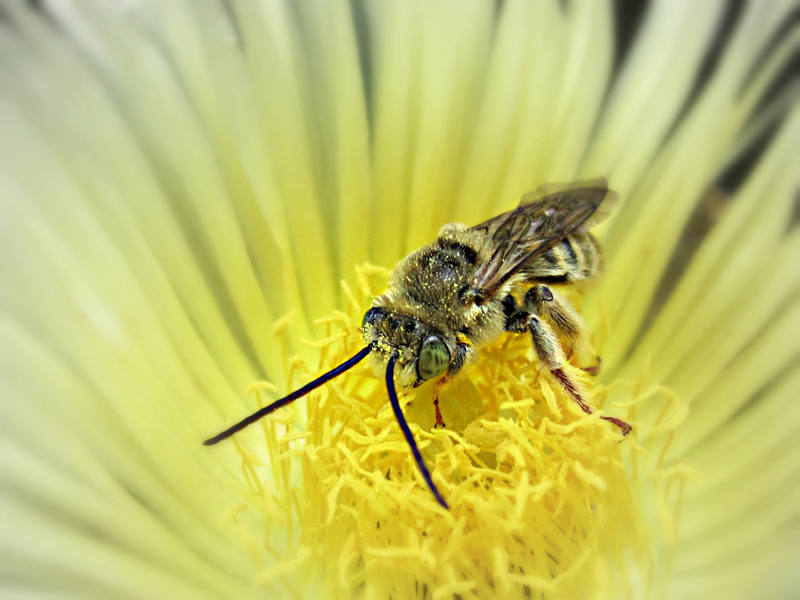As conservationists, it is sometimes difficult to assess and establish the value of a particular species. When it comes to pollinators as a whole, it is easier to quantify just how different our world would be without them.
If you’re reading this, chances are you have at least a passing interest in protecting pollinators. Maybe you are motivated by Colony Collapse Disorder and its impact on honey bee populations. Maybe you’re a farmer who’s primary interest is in crop yields. Perhaps you’re a naturalist who is interested in the ecological benefits of pollinators. Whatever your background, it’s safe to assume you place some value on the importance of pollinators.

Economic Impact
Pollinators, including bees, flies, beetles and moths, help in the production of nearly 75 percent of crops and roughly 80 percent of all flowering plants. According to the White House, pollinators contribute more than 24 billion dollars to the United States economy. In 2009, the crop benefits from native insect pollination in the United States were valued at more than 9 billion dollars.
- • In Washington and Oregon pollinator dependant crops include blackberries, raspberries, apples, sweet cherries, pears, and alfalfa. The combined value of pollinator-dependant crops in these two states is 3 billion dollars per year.
- • Maine is the home of 60,000 acres of lowbush blueberries, making that state the largest producer of that pollinator-dependant crop to the tune of 75 million dollars a year.
- • New Hampshire and Vermont share a combined total of 10,000 acres of apple orchards, producing a yearly crop valued at more than 30 million dollars annually.
- • Wisconsin is the largest producer of cranberries, producing a crop worth 350 million dollars per year and employing more than 7,000 people.
- • In 2014, Illinois was the largest producer of pumpkins, supplying over 20,000 acres worth of jack-o-lanterns and pie pumpkins valued at 47 million dollars. • Pumpkins are largely pollinated by native bees, including specialist squash bees (Peponapis and Xenoglossa).
- • California produces the nation’s largest crop of strawberries, valued at 2.6 billion dollars. Pollinators are major contributors to the size, yield, and quality of this crop – details on that below.
Pollinators and Your Plate
As mentioned above, most fruits, nuts, berries, and other fresh produce require insect pollinators. Foods like chocolate, vanilla, coffee, almonds, and berries wouldn’t be available without insect pollinators. Even dairy products used in desserts like cheesecake and crème brûlée would be harder to come by, as many cows eat diets of pollinator-dependent alfalfa or clover.
Even crops that are self-fertile benefit from insect pollination. Most strawberry cultivars produce tiny flower clusters including both male and female, and sometimes sterile flowers. While wind will sometimes allow these flowers to share pollen, open pollination by insects will increase fruit set, yield, and quality of fruit. The more flowers in the cluster that are pollinated, the larger the fruit. As many as 20 bee visits to each flower cluster are required to fully pollinate all of the flowers.
Without pollinators, our diet would quickly be limited to a few wind-pollinated crops such as corn, and wheat. This would mean no ketchup, mustard, pickles, or onions on your beef-less soy burger.

Benefits to Natural Areas and Ecosystems
When we look at the benefit of pollinators to our natural world, the numbers are staggering. Pollinators keepplant communities healthy and productive. Around 80 percent of Earth’s flowering plants depend upon pollinators for reproduction. A nature walk or stroll through a garden would be a very different experience without pollinators.
For hunters, fishing enthusiasts, and bird-watchers, the benefits are clear. Fruits and seeds derived from insect pollination are a major part of the diet of mammals ranging from red-backed voles to grizzly bears. More than 90 percent of birds rely on insects at some stage in their life. Studies have shown that diverse and abundant plant communities that support pollinators also support they types of insects that are favored by fish.

Societal and Spiritual Value
More esoteric, but equally valid is the emotional, spiritual, and societal benefits pollinators provide. Would Newton have developed the theory of relativity had not the insect-pollinated apple fallen on his head? Would Flight of the Bumblebee have been composed? Would the Charlotte Hornets need to find a lesser mascot?
We know the work ethic of bees and ants have inspired numerous works of prose. The shine of beetles have both inspired and directly contributed to fashion; iridescent beetle wings were applied to the finest Victorian ball gowns before synthetic sequins were invented. Meanwhile butterflies have captured the imagination of artists and have embellished works from Renaissance masterpieces to today–and bring excitement as children chase one across the garden.
Pollinators add value to our lives in numerous ways. In many places however, the essential service of pollination is at risk from habitat loss, pesticide use, and other environmental factors. Xerces Society staff work tirelessly every day to change this, and it is why we celebrate pollinators each summer. To learn more about how you can help protect pollinators, click here.



